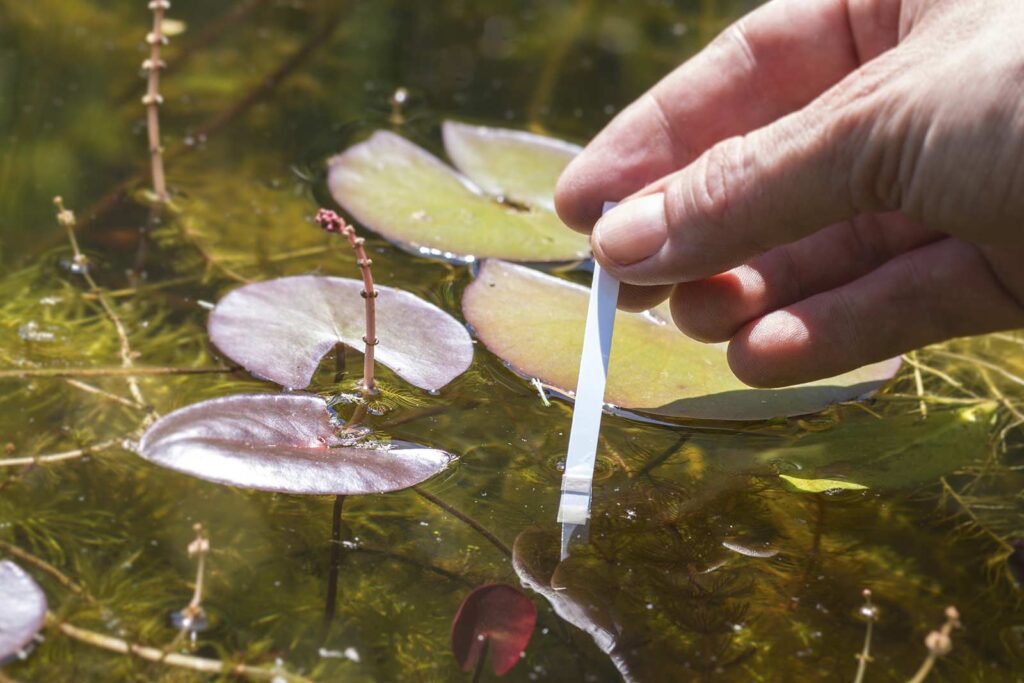One of the most important benefits of the Conservation Reserve Program (CRP) is the improvement of water quality in farmlands participating in the program. While traditional agricultural practices can damage our country’s water supply by the use of pesticides and other harmful chemicals, CRP has been shown to improve water quality through numerous research and case studies. FARPI, or the Food and Agricultural Policy Research Institute, has estimated that in 2007, toxic nitrogen in the water was reduced by 278 million pounds (95%), and phosphorous was reduced by 59 million pounds (86%), due to CRP initiatives.
In the US, agriculture is the top contributor to detrimental chemicals found in the water supply. Research has shown that fertilizer and chemicals used across the US in agricultural practices contain a half million tons of pesticides, 12 million tons of nitrogen, and 4 million tons of phosphorus, which can leak into water sources, creating a dangerous situation not only for the land itself, but for the humans and animals consuming this water. Runoff and infiltration from these sources contaminate bodies of water like streams, groundwater, and rivers, leading to degraded water quality in drinking water, groundwater, and other water supplies.
Luckily, government programs like CRP are attempting to mitigate this contamination through a variety of initiatives including reducing soil erosion, planting and maintaining buffer strips and grass filters around water sources located on farmland, and restoring wetland habitats.
Clean Lakes, Estuaries and Rivers (CLEAR) Project
CRP enrollment has been linked to water quality improvement. Specific programs within CRP, such as the Clean Lakes, Estuaries and Rivers (CLEAR) project, have been initiated to improve water quality in specifically challenging areas, like the Mississippi River and Great Lakes Basin.
Programs like CLEAR and other CRP initiatives counteract the damage to water caused by harmful agricultural nutrients and pesticides by creating riparian buffers, filter strips, or grassed waterways between farmland and water sources. These types of buffers filter sediment and other harmful substances, allowing native trees or grass strips to stop these chemicals before they enter the water stream.
CP23 and CP37 Program
Another way in which CRP improves water quality is by restoring wetlands across the US. Wetland improvement initiatives like CP23 and CP37, work to ameliorate the harmful effects of chemicals flooding downstream into wetland areas. This restoration of wetlands converts noxious nitrate or nitrogen into benign atmospheric nitrogen, not only improving the quality of these water sources, but also providing habitats for migratory birds and other species that depend on the healthy water in the wetlands. This is a huge boost to the overall water supply of the US, as up to 1.5 million gallons of water can be stored in just one acre of wetlands.
Cost Savings
These initiatives, as well as other CRP projects to recharge aquifers, reduce flooding, and store groundwater, are not only beneficial to the environment, but they can be extremely cost-effective methods for farmers as well. In some cases, these types of water improvement strategies have lowered costs from an average of $5.89 per pound of damaging nitrate/nitriogen removed to $1.38 per pound. By signing up for CRP, farmers looking to fix contamination issues in their water supply can save money in addition to improving the quality of their water sources.
When you participate in the CRP, you can take simple but effective measures to promote healthy and safe water supplies on your farmland. FDCE is here to assist you with questions, strategies and the application of these measures to help improve your water supply quickly and effectively. Please click here to contact us and learn more about how FDCE can help you establish CRP practices on your land to better your water supply.

